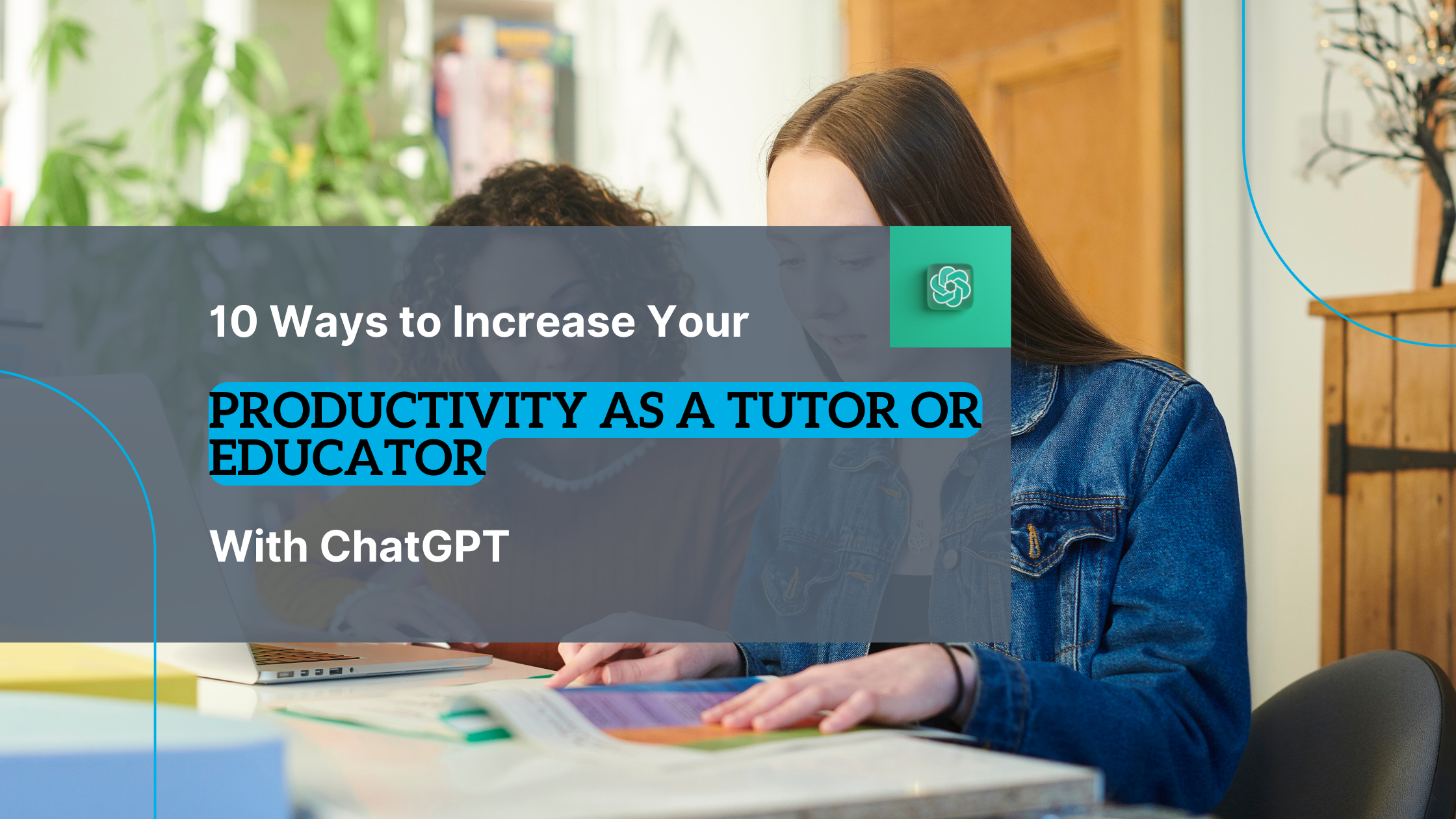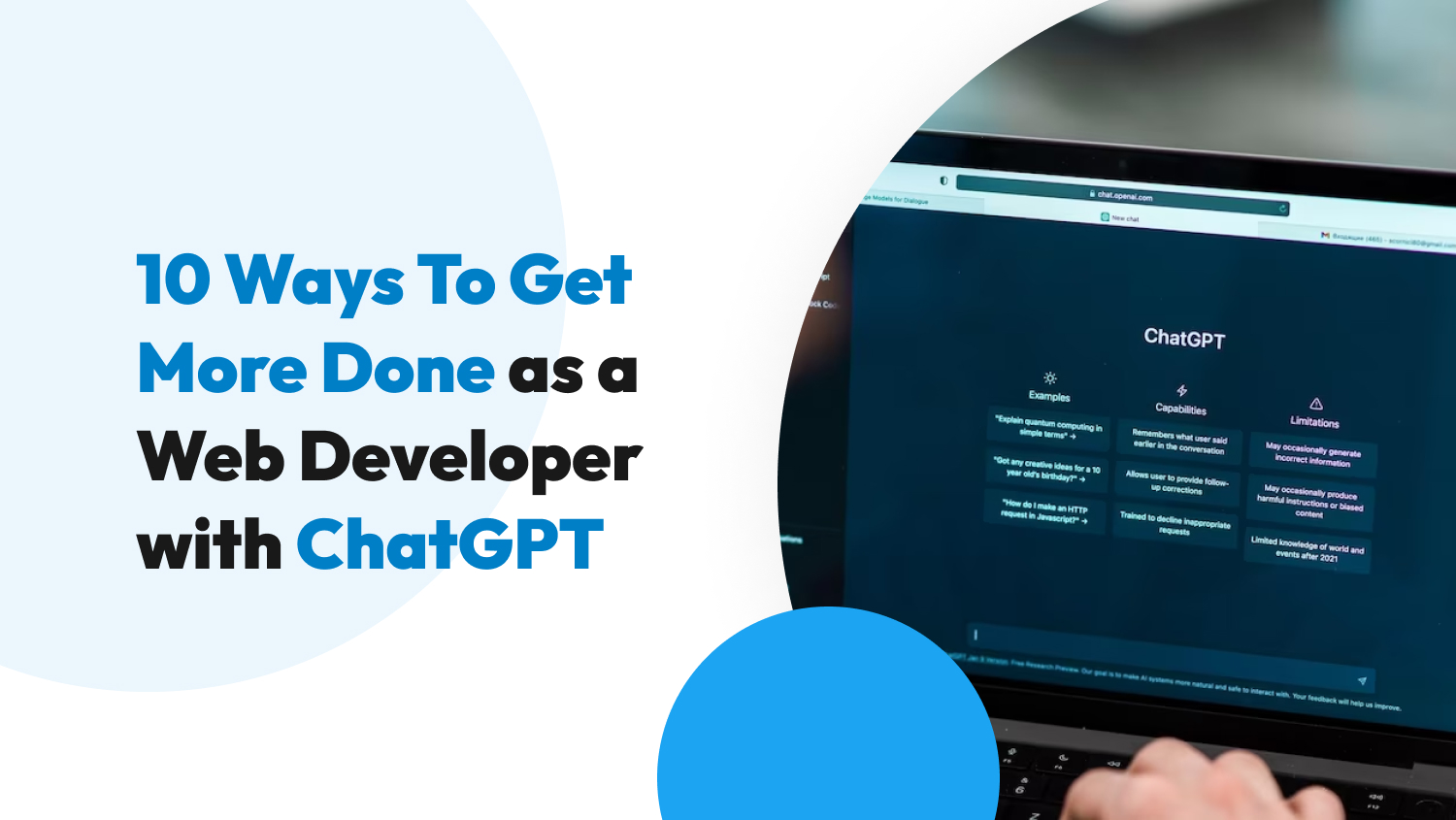ChatGPT
10 Ways to Increase Your Productivity as a Tutor or Educator With ChatGPT
As the world becomes more digitally connected, so too do the methods of education. Students are turning to online platforms and resources to supplement their learning, and tutors and educators are finding new ways to teach. One of the most exciting developments in this space is the rise of chatbots and AI assistants like ChatGPT. It has the potential to revolutionize the way that teachers interact with their students and boost their productivity.
ChatGPT is a large language model developed by OpenAI that is capable of engaging in natural language conversations with users. It has been trained on a massive corpus of text data and can generate responses to a wide range of prompts. This makes it an ideal tool for tutors and educators looking to streamline their workflows and increase their productivity.
Here are some ways that ChatGPT can help tutors and educators boost their productivity and improve the educational experience for their students.
1. Writing Lesson Plans
Although your creativity and originality are irreplaceable when making lessons, ChatGPT can provide a head start to save you time. You can ask it to generate a lesson on almost any subject for any audience, and it will provide a helpful list of options. Even though these plans may not be complete, they often offer excellent ideas that you can develop. You can also refine these ideas even further by asking ChatGPT some insightful follow-up questions.
Prompt examples for writing lesson plans include:
- Create a lesson plan about _______.
- Write me a lesson plan about _______ for (education level).
- Plan 3 lessons to explain _______. Each lesson needs (specify details).
2. Creating Writing Examples
ChatGPT can synthesize ideas and write about them, so you can ask it to create some writing examples that you can use in class. In addition, it can create a series of examples written at different grade levels. For example, you can ask it to create a 1000-word essay about a certain topic with the writing ability of a seventh-grader. Then you could repeat the process for an adult, a high school student, and even an elementary student. These could be used to compare and contrast the writing examples among themselves in terms of word choice, style, and content.
Prompt examples for creating writing examples include:
- Write a 1000-word essay about _______.
- Write a 2000-word essay about _______ written by a _______.
- Write a 5-paragraph essay about _______.
3. Vocabulary Work
If you’re a tutor or educator teaching your students English vocabulary, you can use ChatGPT to create a list of vocabulary based on the topic of your lesson. You can also ask it to give you the definition of each word or even create example sentences to help your students learn how to use these words.
Furthermore, you can provide ChatGPT with a list of vocabulary words, and then ask it to write a story using these words. You can also indicate the age or grade level of the target audience to make it age-appropriate. Not only that, but you can also ask it to generate some comprehension questions for your students to go along with the story.
Prompt examples for vocabulary work include:
- What are 10 adjectives to describe _______?
- Using these adjectives, write a short story for _______.
- Generate some comprehension questions about the story.
4. Critical Thinking Exercises
Ask ChatGPT to create content about a certain topic related to class standards, and then ask your students to fact-check it. Now, they will have to do their own research and confirm the accuracy of the information provided by ChatGPT to accomplish this. They can give citations for the content or any proof they find. This will encourage critical thinking and help develop good thinking habits among your students when using ChatGPT and other AI tools.
Prompt examples for critical thinking exercises include:
- Tell me something about _______.
- Write a 1000-word article about _______.
- Write a 3-paragraph essay about the history of _______.
5. Writing Emails and Recommendation Letters
Writing emails to parents can take some time, but is an essential part of an educator’s job. With the use of ChatGPT, teachers can save a lot of time by asking it to create emails for their students’ homes. It can also create excellent letters of recommendation, based on just a few descriptions from a teacher. In fact, many professors from around the world are using ChatGPT for this purpose — check out this Reddit forum.
Prompt examples for writing emails and recommendation letters include:
- Write an email from a teacher to a parent criticizing a student who (specify details).
- Write an email from a teacher to a parent praising a student who (specify details).
- Write a positive college recommendation letter for a student named _______ who (specify details).
6. Writing A Permission slip
Educators can also use ChatGPT to save time in writing a permission slip, whether it’s for watching a movie in a class or attending a field trip. However, just make sure that the permission slip you use complies with the policies and regulations of your school, district, and state.
Prompt examples for writing a permission slip include:
- Write a permission slip for a student to watch a PG-13 movie in class that contains strong language and violence.
- Write a permission slip for a student to attend a field trip (specify details).
- Write a permission slip for a student to borrow a book from the library.
7. Creating Gap-Filling Exercises
As an educator, gap-filling exercises are a great way for your students to practice what they have learned from your class. However, making this type of exercise on your own can take a lot of time and effort, so why not ask ChatGPT for assistance? By simply providing it with the type of gap-fill exercise that you want, ChatGPT can create it in just a few seconds! Then, you can simply copy and paste it to a Word document and have it printed, or perhaps use ChatGPT in your classroom and do the activity as a class!
Prompt examples for creating gap-filling exercises include:
- Create a gap-filling exercise about _______.
- Create a gap-filling exercise about _______ with the right answers.
- Create a 20-item gap-filling exercise about _______ with the right answers.
8. Creating Reading Comprehension Questions
Another way to use ChatGPT in your classroom is when you want to assess your student’s comprehension of a text in a reading class. Simply input the passage into ChatGPT and ask it to create some reading comprehension questions about the passage. Alternatively, you can also ask it to create a reading comprehension passage on almost any topic. However, it is unable to write about current events, trends, or information that occurred after its training — ChatGPT’s training only includes data up to 2021.
Prompt examples for creating reading comprehension questions include:
- Create reading comprehension questions about this passage: (input passage)
- Create a reading comprehension passage, and then create reading comprehension questions about it.
- Create a 5-paragraph reading comprehension passage, and then create 10 reading comprehension questions about it.
9. Generating Grading Rubrics
Using AI-generated rubrics as-is may not be the best idea. However, using ChatGPT to generate a rubric that tutors and educators can then modify to fit their assignments is an excellent way to save time!
Prompt examples for generating grading rubrics include:
- Create a rubric to grade a _______.
- Show me some grading rubrics examples for a _______.
- What are some rubrics when grading a _______?
10. Providing Feedback on Assignments
Finally, ChatGPT can increase productivity by providing quick and accurate feedback on student assignments. Tutors and educators can ask ChatGPT to review a student’s work and provide suggestions for improvement. This can save you a lot of time and help to ensure that your students receive timely and useful feedback.
Prompt examples for feedback on assignments include:
- Can you review this student’s essay and provide feedback on its structure and content?
- Can you check this student’s math homework and provide feedback on their calculations?
- Can you provide feedback on this student’s science project and suggest ways to improve it?
By automating routine tasks such as reviewing assignments, ChatGPT can help tutors and educators save time and allow them to give more simplistic feedback faster. This way, they can focus on higher-level tasks such as providing more personalized and complex feedback and support to students.
The Bottom Line.
As a language model with extensive knowledge in various subjects, ChatGPT can serve as a powerful tool to increase productivity for tutors and educators. By providing accurate and quick responses to questions and offering personalized learning experiences, ChatGPT can save time for teachers and allow them to focus on other important tasks.
Additionally, with its natural language processing capabilities, ChatGPT can also provide customized feedback, respond to student inquiries, and support independent learning in real-time. Overall, ChatGPT has the potential to enhance the educational experience for both students and educators by increasing accessibility, efficiency, and productivity.
What to Read Next
Check out more about tools like ChatGPT to improve your productivity here.








